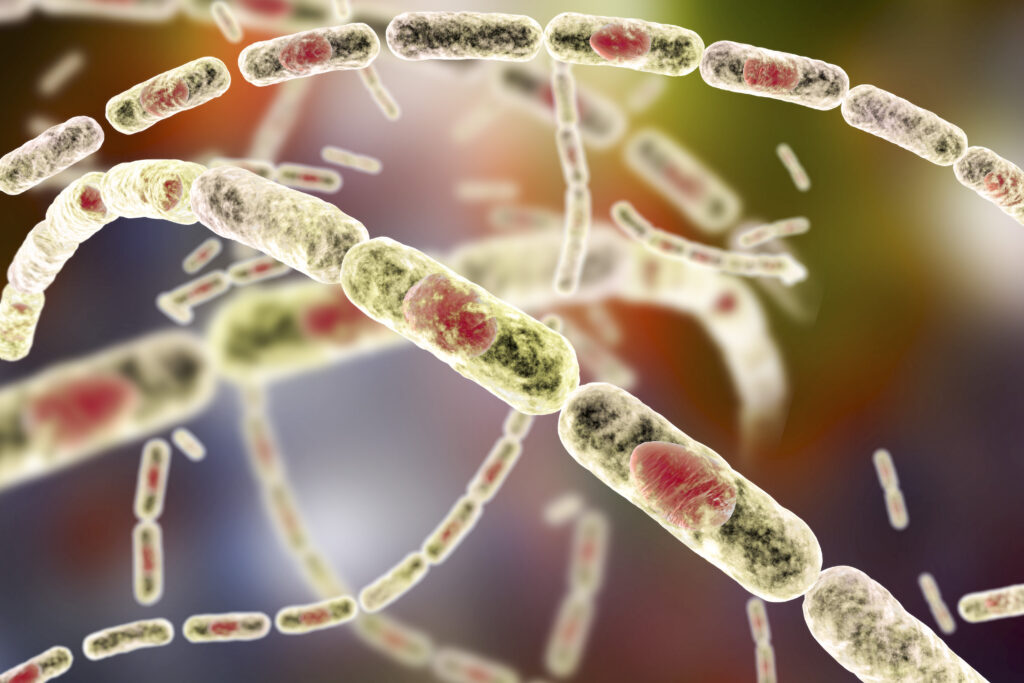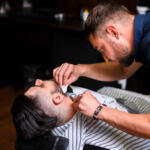
Are you wondering if your shaving brush is a breeding ground for bacteria? If so, this blog post is for you! We’ll explore what happens to the bristles of a shaving brush when it comes into contact with bacteria and how you can keep your brush clean and sanitary.
So let’s dive in and get the answers!
Do Shaving Brushes Hold Bacteria?
According to the CDC, people who work with animal products such as wool, skins, or hair are more vulnerable to Bacillus anthracis, the bacterium that causes anthrax.
However, a CDC statistician discovered nine instances of anthrax linked to brushes that were not used for shaving: one from a hairbrush, one from a cleaning brush, and seven cases of anthrax linked to brush production. According to the CDC, animal hide drums have also been a rare cause of anthrax infections.
New animal-hair brushes are unlikely to be a source of anthrax due to contemporary disinfection and import controls.
With that said, you can rest assured… with proper cleaning, it’s safe to say shaving brush does not hold the risk of any bacteria infection.
Now, you can go back to what you were doing…
or…
Continue to be entertained with some history and learn a thing or two.
The Hygiene Factor: Investigating Bacteria in Shaving Brushes
In shaving brushes, a variety of bacteria can be found. Researchers in New York City tested shaving brushes purchased from street vendors in 1921 and uncovered Bacillus anthracis, the bacteria that causes anthrax.
Microbial contamination of brushes used for preoperative shaving was also investigated, with 18 of 24 brushes examined contaminated with 106–109 colony-forming units of bacteria. This shows the importance of keeping your brush clean and properly dried to prevent microbial growth.
What is Bacillus Anthracis?
This type of bacteria is a gram-positive, rod-shaped organism most commonly associated with anthrax. It can exist in many areas, from soil to animal hides, and is typically found in warm, moist areas. It can produce highly infectious spores that can be transported to other areas via air or physical contact.
Bacillus anthracis can cause a severe and potentially fatal infection if left untreated. Many people are still at risk of being exposed to contaminated shaving brushes, as they can carry bacteria for long periods before showing any signs. As such, it is important to take precautions and ensure they are properly disinfected before use.
The Risk of Contamination
The risk of contamination from shaving brushes is real and should not be taken lightly. While it is rare in the United States, anthrax can still be contracted from contact with infected animals or contaminated animal products, making it essential to take precautions when handling shaving brushes.
Additionally, other bacteria found on hairbrushes, such as Staphylococcus marcescens, can cause infections in vulnerable individuals. To minimize the risk of contamination, it is important only to use your brush and never to share toothbrushes or allow them to touch. Proper cleaning and care of your brush are also essential to prevent bacterial growth.
How Long Can Bacteria Last on a Shaving Brush?
The length of time bacteria can last on a shaving brush will depend on how well it is maintained. Keeping the brush dry between shaves can help reduce the risk of bacterial growth, as well as rotating between two or more brushes.
Some people have had the same shaving brush for decades without any issues; however, if it is not properly dried after use, bacteria and mold can grow and damage the bristles. It is also important to deep clean before using animal hair brushes to remove unpleasant smells.
Synthetic brushes are less likely to harbor bacteria due to their structure, but even these must be adequately dried. Therefore, proper cleaning and maintenance of shaving brushes are essential to ensure that bacteria do not linger too long.
Cleaning Your Brush
To keep your shaving brush safe from bacteria, it is important to clean it regularly. There are a few ways to do this, depending on your brush type.
- Natural hair brushes, such as badger or boar, can be washed with pet shampoo, diluted vinegar, borax, and liquid dish soap.
- Synthetic brushes should be washed with white vinegar, apple cider vinegar, lemon juice, or castile soap.
It is also important to give your brush a deep clean every once in a while to ensure it stays free of bacteria and dirt buildup. No matter the cost of your shaving brush, taking care of it and cleaning it regularly will help it last longer and keep your skin safe from harmful bacteria.
The Risk of Anthrax: Where Did It Come From?
While the risk of anthrax is generally low, it is important to note that during World War I, knockoff’ badger hair’ brushes made from poorly disinfected horsehair led to rampant anthrax outbreaks throughout the US.
Men’s shaving brushes made from animal hair were once linked with anthrax cases around World War I. Using anthrax surveillance data from 1919 to 1924, contaminated shaving brushes accounted for at least 10 percent of all anthrax cases.
Brushes made in the United States after 1930 and well-used (even antique) brushes appear to pose very little risk.
While horse hair is usually not necessarily risky (in all fairness, horses do carry a higher chance of carrying anthrax as they are herbivores compared to other animals), it is still important to be aware of the potential risk and take steps to reduce it.
Conclusion
In conclusion, shaving brushes can potentially hold bacteria, and the potential risk of contamination should never be overlooked. While natural hair brushes may provide a more luxurious lathering experience, synthetic brushes are less likely to hold onto bacteria due to their quick-drying properties.
Furthermore, animal hair brushes, such as badger bristles, offer a unique shaving experience but can also be problematic due to their potential for microbial contamination. It is important to clean your brush regularly and take extra caution if you are using an animal-based brush. With proper care and maintenance, shaving brushes can have a normal lifespan of up to 10 years.
Last update on 2024-04-25 / Affiliate links / Images from Amazon Product Advertising API
Affiliate Disclosure: This post contains affiliate links, which means I may receive a small commission, at no extra cost to you, if you make a purchase using these links.

Jay Kang
Just because i'm asian does not mean I don't need shaving. I always wanted to grow a beard when I was young, now I need to shave because hair growth for me is a problem. I'm going through what every man will and has gone through before.





